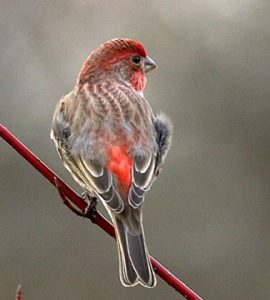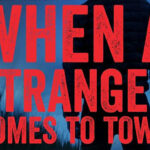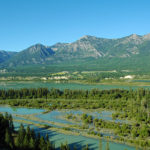Home »

Cranbrook CBC results before Kimberley count
Now that the 2016 Cranbrook Christmas Bird Count (CBC) is largely complete, we can think about the results, thank the participants and prepare for the Kimberley Count in January.
This year we were fortunate to have 10 feeder watchers and 15 roving counters in four teams.
Kimberley CBC Jan. 4
On January 4, at 8:45 a.m., starting in the Platzl parking lot, teams will radiate out in all directions. Birders will check the creeks – Mark, Lois and Cherry; rivers – St Mary and Kootenay, and wetlands. Communities – Marysville, Townsite, Meadowbrook, Wasa and Wycliffe are attractive to birds because of their bio-diversity, feeders and such trees as crabapple and mountain ash. Wild areas include the Kimberley Nature Park, Nordic trails, Lost Dog Ranch and old airport. Grasslands and open skies of the Kootenay lowlands and Clearview will be scrutinized. In the past, we have recorded a wide variety of species numbering in the low 40’s. When the final results are tallied, Cranbrook and Kimberley counts will identify around 60 species of hardy and interesting East Kootenay birds.

Birders test their listening skills throughout the year, especially in winter, when birds don’t say much. Birds are not establishing territories or attracting mates, but are trying to stay in touch with one another. The sounds they make include little chirps, caws and quacks, also pecks, taps and drums. With traffic noise, wind in the trees and squeaky snow underfoot, we have to concentrate, speculate and decipher whether we’re hearing a roof vent, dry leaves, snow and ice falling, or branches and tree trunks rubbing.
While examining Joseph Creek near Western Financial Place, a somewhat familiar note was heard, but difficult to place. A clucking ‘pup’ was repeated and shortly after, a well-camouflaged American Robin burst from its perch. Later, two other robins were seen, creating a dramatic winter scene. Often the soft, husky ‘vweet’ confirmed a small flock of house finches, and occasionally, a very harsh, un-musical, descending ‘shaaaaar’ ratified the Steller’s Jay.
Dark-eyed Juncos are gentle, attractive little creatures that do not fear the winter snows. Trim, dainty little sparrows that flit about forest floors of the Western mountains and Canada, they flood the rest of North America in winter. They’re easy to recognize by their crisp markings and the bright white tail feathers they flash in flight. One of the most abundant forest birds of North America, you’ll see Juncos on woodland walks as well as in flocks at your feeders or on the ground beneath them.
Juncos have a rounded head, a short, stout bill and a fairly long, conspicuous tail. Their appearance varies across the country, but generally, they are dark grey or brown birds, brightened up by a pink bill and white outer-tail feathers that periodically flash open particularly in flight. White under parts gives the effect of the birds having waded breast-deep in the snow. These ‘birds of the ground’, hop around the bases of trees and shrubs in forests or venture out onto lawns, looking for fallen seeds. In shallow snow, they leave distinctive pairs of delicate footprints. You’ll often hear their high ‘chip’ notes, given almost absent-mindedly while foraging, or intensifying as they take short, low flights through cover.
In spring, the song is very pleasing, a tender sweet trill.
‘Resident’ to medium-distance migrants, Juncos that breed in Alaska and Canada, migrate to the southern US in winter. Some populations in the Rocky Mountains are short-distance migrants, while some individuals do not migrate at all.
Dark-eyed Juncos breed in mixed coniferous and mixed deciduous forests across much of North America, at elevations from sea level to over 10 000 feet. During winter and on migration, they use an even wider variety of habitats, including open woodlands, fields, roadsides, parks and gardens. Primarily seed eaters, weed seeds provide 75% of their year round diet, adding such insects as beetles, moths, butterflies, caterpillars, ants, wasps and flies when breeding. This service to agriculture cannot be ignored.
Juncos’ nests are built of mosses or grasses on or near the ground. The speckled eggs and the streaked babies are excellent examples of protective coloring. Despite being numerous and widespread, populations have decreased by about 50% over the past 50 years. Its conservation status is rated as ‘Least Concern’, but Juncos must be regarded with great respect.
The Cranbrook Results
This year’s count identified an average number of species – 42.
The high of 51 species was recorded in 2002
During the 33 years of Christmas counts, the number of species recorded is 101.
Please check the naturalist website for final results and other information.
The List

Pied-billed Grebe 1
Mallard 434
Northern Shoveler 4
Common Goldeneye 3
Hooded Merganser 2
Bald Eagle 9
Cooper’s Hawk 1
Red-tailed Hawk 2
Merlin 1
Ruffed Grouse 1
Rock Pigeon 98
Northern Pygmy Owl 1
Downy Woodpecker 19
Hairy Woodpecker 14
Northern Flicker 18
Pileated Woodpecker 8

Gray Jay 5
Steller’s Jay 4
Blue Jay 7
Clark’s Nutcracker 3
Black-billed Magpie 1
American Crow 293
Common Raven 188
Black-capped Chickadee 94
Mountain Chickadee 113
Red-breasted Nuthatch 51
White-breasted Nuthatch 1
Brown Creeper 2
American Dipper 2
Golden-crowned Kinglet 2
Townsend’s Solitaire 3
American Robin 4

Bohemian Waxwing 507
Northern Shrike 3
Song Sparrow 12
Dark-eyed Junco 13
Red-winged Blackbird 1
Cassin’s Finch 1
House Finch 266
Red Crossbill 9
Pine Siskin 2
House Sparrow 2
– Submitted by Daryl Calder on behalf of Rocky Mountain Naturalists
Lead image: A Dark-eyed Junco Junco. Photo by Lyle Grisedale







